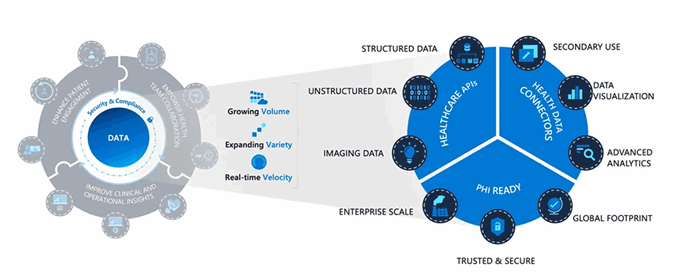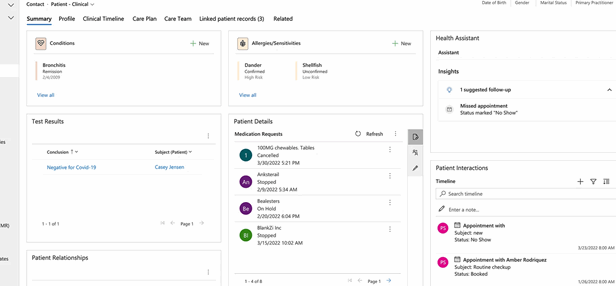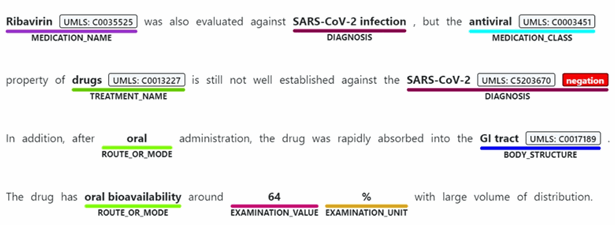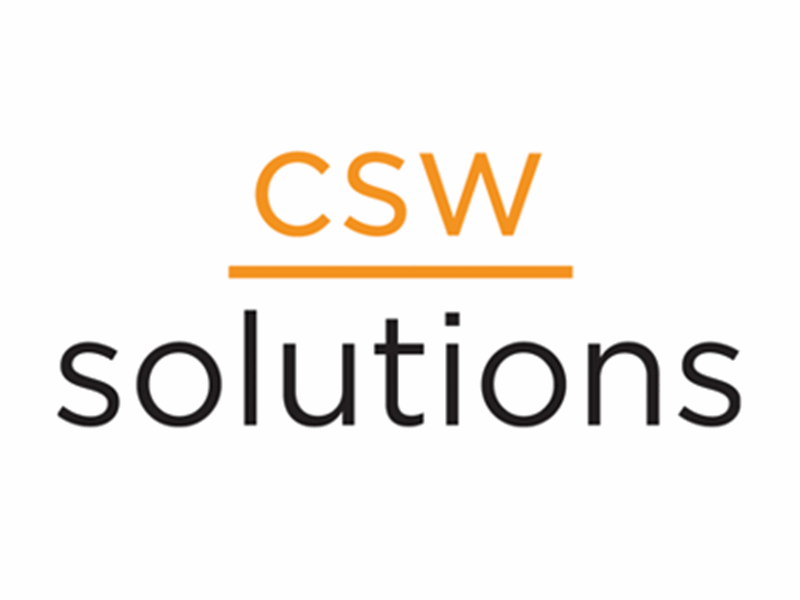Cloud migration and managed services are the best way to improve your business and operations. Read on to learn more about what CSW Solutions can do for you as your Gold-certified cloud solutions partner.
Microsoft Cloud for Healthcare: Part I
Microsoft recently announced advancements in cloud innovations for healthcare with the overall accessibility of Azure Health Data Services and even more updates to Microsoft Cloud for Healthcare, which was initially launched in 2020. This is another advancement in Microsoft's efforts to deliver on cloud solutions and improve services and strategy for the healthcare industry.
From patient engagement to clinician access and experiences and functional insights, Microsoft Cloud for Healthcare is an evolution of innovative solutions in an industry that is in need of scalable and reliable resources to improve operations while retaining data security in the cloud. As the situation in recent years has proven to us, across the country and the world, this is an ongoing effort that must be dealt with to improve the welfare of our front-line workers in the industry, decrease clinician burnout, and create a more customized experience for virtual and in-person patients, while enabling health data interoperability. Here are a few highlights to consider:
Azure Health Data Services
This is the most recent offering and it is a collection of technologies for Protected Health Information (PHI) on the cloud. It essentially helps de-identify data for secondary use, protects data privacy, and generates insights with analytics and AI tools. Azure Health Data Services merges diverse data types in the same datastore at the patient level. It is one of the only generally available solutions of its kind that is made for bringing all this data together to manage and transform all kinds of formats into other data standards like Fast Healthcare Interoperability Resources (FHIR) and Digital Imaging and Communications in Medicine (DICOM). Pricing is based on structured storage use and provisioned throughput, with service runtime.

Microsoft Power Apps
This is a new way to get a fully-connected 360-degree kind of view of patients so that the quality of care can be improved in real-time. Unified Patient View can display demographic and clinical data across your solutions to provide faster and better visualizations with aggregate data sources to improve insights. The biggest patient worry is where care gaps are concerned in their care, with this type of overview for each patient can really ease the burden no matter the resource. Patient Links also gives you the ability to view "rolled up" patient data so there is never an issue where multiple records exist for one patient, or only parts of records can be found. Finally, like many other industry-specific Microsoft options, access to all clinical and even non-clinical information can be tiered by authorization for security too!
Text Analytics for health
This is one of the coolest breakthroughs we've seen in a long time. Microsoft is the first cloud provider to allow customers to formalize their natural language processing (NLP) output as bundles of interconnected hierarchical FHIR resources, in adherence with the US Core standards. Recently available to the public this solution can simultaneously accelerate unstructured data insights and vastly improve a more centered source of data for interoperability between health organizations. Text Analytics for health structuring to FHIR evolved from Microsoft Azure Cognitive Services that extracts information from biomedical and clinical free-text documents.
Text Analytics for health enables researchers, data analysts, software developers, and medical professionals to obtain information from unstructured but protected health data and realize a massive range of scenarios to consider for a research study, development, or learning—like producing analytics on historical medical data and creating prediction models. They could also match patients to clinical trials or assist in clinical quality reviews. Competent in a diverse range of medical data, this service is capable of processing a broad range of data types and tasks. It can also provide sophisticated capabilities for extracting further comprehension with the following:
- Named-entity recognition: Identify medical terms in the text and determine boundaries and classification into domain-specific entities.
- Entity linking: Associate medical entities with common ontology concepts from standard clinical coding systems.
- Relation extraction: Infer and extract semantic relationships and dependencies between different entities.
- Assertion detection: Return modifiers for Certainty, Conditionality, and Association.

We have only covered a few of the offerings from Microsoft Cloud for Healthcare in this post. Check back next week for a more in-depth look at this industry-specific offering that is continuing to expand its ability to provide the best software development services for healthcare at a very important time for the betterment of all.

